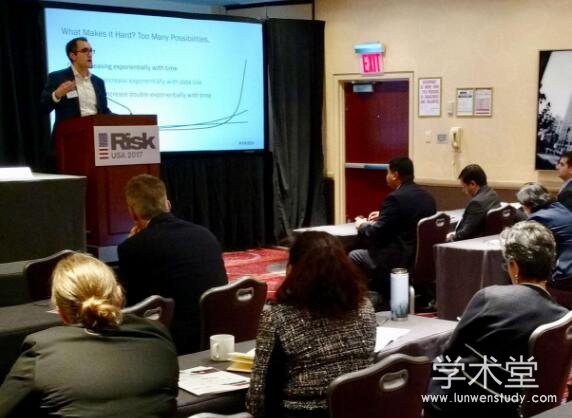科研之始,在于读论文。一方面,把握最前沿的研究动态,激发自身研究灵感。另一方面,不做好文献调研,自己的绝妙想法变成了重复造轮子,这种体验可不太妙。
一、到底该怎么读论文?
每天单从arxiv上就能刷出成百上千篇新论文,顶会期间,论文更是如钱塘江大潮拍岸而来。如何才能不迷失在论文烟海之中,高效获取有效信息呢?
这里奉上ACM和IEEE Fellow、剑桥大学计算机科学教授Srinivasan Keshav的论文阅读绝技三遍论,手把手教你如何高效读论文,告别海量精力投入却收效甚微之窘境。

Srinivasan Keshav
科研小白必备,科研老手亦可参考。
第一遍:快速预览,把握概要
拿到一篇新论文,第一遍阅读要花多长时间?
5-10分钟足以。
不是每一篇论文都干货满满,所以初次见面,先打个印象分,再决定是否继续,是更为高效的方法。
具体操作如下:
1、仔细阅读标题、摘要和简介。
2、先忽略内容,读一读文章中的每个小标题。
3、如果有数学内容,先大致浏览,确定其理论基础。
4、读结论。
5、浏览参考文献,如果有你已经读过的,把它们勾选出来。
如此读完第一遍,你需要问问自己以下几个问题:
1、分类:这是什么类型的论文?
2、背景:与哪些其他论文相关?基于何种理论基础来分析问题?
3、正确性:论文的假设看起来正确吗?
4、贡献:论文的主要贡献是什么?
5、清晰度:这篇论文写得好吗?
当你心中有了这些答案,你也就知道自己该不该真正精读这篇论文了。
P.S. 这里也涉及到撰写论文的一个小技巧:结构尽量清晰,要点尽量突出,让审稿人第一遍就能get到。

科研文献阅读
第二遍:抓住重点,暂略细节
当你判定一篇论文值得一读,就可以把它加入第二遍阅读的队列。
第二遍阅读,就要好好看看论文内容了,投入的时间大概在1个小时左右。
不过,不要纠结于没见过的术语,也不要沉迷于证明推导的细节:把它们记下来,先略过。
这一遍阅读中,有两个小技巧:
1、仔细查看论文中的图表。关注一下细节:坐标轴是否正确标记?结论是否具有统计意义?往往细节之中,就能窥见真正出色的工作和水文之间的区别。
2、标记论文中涉及的、你并未读过的参考文献,之后进一步阅读。
读完第二遍,你应该能掌握论文内容,总结全文主旨了。
不过,有时候即使是这样读完一遍,也未必就能读懂论文:论文可能涉及你陌生的领域,有太多陌生术语;作者可能采用了你不了解的证明或实验技术;甚至,这篇论文可能写得不行。
那么,就进入最后一步吧。
第三遍:重构论文,注重细节
要想完全理解论文,就需要展开第三遍阅读:跟随作者的思路,在脑海中重现论文内容。
将重现的结果与实际论文进行比较,就可以轻松看出论文的创新点,找到文中隐含的假设,捕获隐藏在实验和技术分析中的潜在问题和引文缺失。
进入第三遍,最重要的事情强调三遍:细节!细节!细节!
找出作者陈述中的每一个假设,亲自挑战它,提出自己的思考。如此,对于论文的证明和其中的技术,你便会有更为深刻的理解。
二、One More Thing:文献调研怎么做?
说到读论文,是不是想起了被文献综述统治的恐惧?
Srinivasan Keshav教授同样有“三步法”要传授诸位。
第一步,善用学术搜索引擎(如谷歌学术),找出3-5篇相关领域近期最高引用的论文。了解这些论文的工作原理,阅读其中related work的部分。幸运的话,这些内容能直接帮你完成文献综述。

谷歌学术
第二步,在这些论文的参考文献中找出其共同引用的论文,或重复出现的作者姓名。访问这些关键人物的网站,查看他们近期发表的论文,也可以看看他们都参加了哪些顶级会议。
第三步,访问顶级会议的网站,浏览它们最近的会议记录。通过“三遍论”的第一遍阅读快速识别高质量的相关工作。汇总这一步中查找出的论文和第二步中的高引论文,基本上就能构成你文献综述的初版内容啦。
最后,三步法可以迭代进行。
祝诸位同学科研顺利~
附:英文原文
How to Read a Paper
Version of February 17, 2016
S. Keshav
David R. Cheriton School of Computer Science, University of Waterloo
Waterloo, ON, Canada
keshav@uwaterloo.ca
ABSTRACT
Researchers spend a great deal of time reading research papers. However, this skill is rarely taught, leading to much wasted effort. This article outlines a practical and efficient three-pass method for reading research papers. I also describe how to use this method to do a literature survey.
1. INTRODUCTION
Researchers must read papers for several reasons: to review them for a conference or a class, to keep current in their field, or for a literature survey of a new field. A typical researcher will likely spend hundreds of hours every year reading papers.
Learning to efficiently read a paper is a critical but rarely taught skill. Beginning graduate students, therefore, must learn on their own using trial and error. Students waste much effort in the process and are frequently driven to frustration.
For many years I have used a simple 'three-pass' approach to prevent me from drowning in the details of a paper before getting a bird's-eye-view. It allows me to estimate the amount of time required to review a set of papers. Moreover,I can adjust the depth of paper evaluation depending on my needs and how much time I have. This paper describes the approach and its use in doing a literature survey.
2. THE THREE-PASS APPROACH
The key idea is that you should read the paper in up to three passes, instead of starting at the beginning and plowing your way to the end. Each pass accomplishes specific goals and builds upon the previous pass: The first pass gives you a general idea about the paper. The second pass lets you grasp the paper's content, but not its details. The third pass helps you understand the paper in depth.
2.1 The first pass
The first pass is a quick scan to get a bird's-eye view of the paper. You can also decide whether you need to do any more passes. This pass should take about five to ten minutes and consists of the following steps:
1. Carefully read the title, abstract, and introduction
2. Read the section and sub-section headings, but ignore everything else
3. Glance at the mathematical content (if any) to determine the underlying theoretical foundations
4. Read the conclusions
5. Glance over the references, mentally ticking off the ones you've already read
At the end of the first pass, you should be able to answer the five Cs:
1. Category: What type of paper is this? A measurement paper? An analysis of an existing system? A description of a research prototype?
2. Context: Which other papers is it related to? Which theoretical bases were used to analyze the problem?
3. Correctness: Do the assumptions appear to be valid?
4. Contributions: What are the paper's main contributions?
5. Clarity: Is the paper well written?
Using this information, you may choose not to read further (and not print it out, thus saving trees). This could be because the paper doesn't interest you, or you don't know enough about the area to understand the paper, or that the authors make invalid assumptions. The first pass is adequate for papers that aren't in your research area, but may someday prove relevant.
Incidentally, when you write a paper, you can expect most reviewers (and readers) to make only one pass over it. Take care to choose coherent section and sub-section titles and to write concise and comprehensive abstracts. If a reviewer cannot understand the gist after one pass, the paper will likely be rejected; if a reader cannot understand the highlights of the paper after five minutes, the paper will likely never be read. For these reasons, a 'graphical abstract' that summarizes a paper with a single well-chosen figure is an excellent idea and can be increasingly found in scientific journals.
2.2 The second pass
In the second pass, read the paper with greater care, but ignore details such as proofs. It helps to jot down the key points, or to make comments in the margins, as you read.
Dominik Grusemann from Uni Augsburg suggests that you “note down terms you didn't understand, or questions you may want to ask the author.” If you are acting as a paper referee, these comments will help you when you are writing your review, and to back up your review during the program committee meeting.
1. Look carefully at the figures, diagrams and other illustrations in the paper. Pay special attention to graphs.Are the axes properly labeled? Are results shown with error bars, so that conclusions are statistically significant? Common mistakes like these will separate rushed, shoddy work from the truly excellent.
2. Remember to mark relevant unread references for further reading (this is a good way to learn more about the background of the paper).
The second pass should take up to an hour for an experienced reader. After this pass, you should be able to grasp the content of the paper. You should be able to summarize the main thrust of the paper, with supporting evidence, to someone else. This level of detail is appropriate for a paper in which you are interested, but does not lie in your research speciality.
Sometimes you won't understand a paper even at the end of the second pass. This may be because the subject matter is new to you, with unfamiliar terminology and acronyms.
Or the authors may use a proof or experimental technique that you don't understand, so that the bulk of the paper is incomprehensible. The paper may be poorly written
with unsubstantiated assertions and numerous forward references. Or it could just be that it's late at night and you're tired. You can now choose to: (a) set the paper aside, hoping you don't need to understand the material to be successful in your career, (b) return to the paper later, perhaps after reading background material or (c) persevere and go on to the third pass.
2.3 The third pass
To fully understand a paper, particularly if you are a reviewer, requires a third pass. The key to the third pass is to attempt to virtually re-implement the paper: that is, making the same assumptions as the authors, re-create the work. By comparing this re-creation with the actual paper, you can easily identify not only a paper's innovations, but also its hidden failings and assumptions.
This pass requires great attention to detail. You should identify and challenge every assumption in every statement.
Moreover, you should think about how you yourself would present a particular idea. This comparison of the actual with the virtual lends a sharp insight into the proof and presentation techniques in the paper and you can very likely add this to your repertoire of tools. During this pass, you should also jot down ideas for future work.
This pass can take many hours for beginners and more than an hour or two even for an experienced reader. At the end of this pass, you should be able to reconstruct the entire structure of the paper from memory, as well as be able to identify its strong and weak points. In particular, you should be able to pinpoint implicit assumptions, missing citations to relevant work, and potential issues with experimental or analytical techniques.
3. DOING A LITERATURE SURVEY
Paper reading skills are put to the test in doing a literature survey. This will require you to read tens of papers, perhaps in an unfamiliar field. What papers should you read? Here is how you can use the three-pass approach to help.
First, use an academic search engine such as Google Scholar or CiteSeer and some well-chosen keywords to find three to five recent highly-cited papers in the area. Do one pass on each paper to get a sense of the work, then read their related work sections. You will find a thumbnail summary of the recent work, and perhaps, if you are lucky, a pointer to a recent survey paper. If you can find such a survey, you are done. Read the survey, congratulating yourself on your good luck.
Otherwise, in the second step, find shared citations and repeated author names in the bibliography. These are the key papers and researchers in that area. Download the key papers and set them aside. Then go to the websites of the key researchers and see where they've published recently.
That will help you identify the top conferences in that field because the best researchers usually publish in the top conferences.
The third step is to go to the website for these top conferences and look through their recent proceedings. A quick scan will usually identify recent high-quality related work.
These papers, along with the ones you set aside earlier, constitute the first version of your survey. Make two passes through these papers. If they all cite a key paper that you did not find earlier, obtain and read it, iterating as necessary.
4. RELATED WORK
If you are reading a paper to do a review, you should also read Timothy Roscoe's paper on “Writing reviews for systems conferences” [3]. If you're planning to write a technical paper, you should refer both to Henning Schulzrinne's comprehensive web site [4] and George Whitesides's excellent overview of the process [5]. Finally, Simon Peyton Jones has a website that covers the entire spectrum of research skills [2].
Iain H. McLean of Psychology, Inc. has put together a downloadable 'review matrix' that simplifies paper reviewing using the three-pass approach for papers in experimental psychology[1], which can probably be used, with minor modifications, for papers in other areas.
5. ACKNOWLEDGMENTS
The first version of this document was drafted by my students: Hossein Falaki, Earl Oliver, and Sumair Ur Rahman.
My thanks to them. I also benefited from Christophe Diot's perceptive comments and Nicole Keshav's eagle-eyed copyediting.
I would like to make this a living document, updating it as I receive comments. Please take a moment to email me any comments or suggestions for improvement. Thanks to encouraging feedback from many correspondents over the years.
6. REFERENCES
[1] I.H. McLean, “Literature Review Matrix,”http://psychologyinc.blogspot.com/
[2] S. Peyton Jones, “Research Skills,”http://research.microsoft.com/en-us/um/people/simonpj/papers/giving-a-talk/giving-a-talk.htm
[3] T. Roscoe, “Writing Reviews for Systems Conferences,”http://people.inf.ethz.ch/troscoe/pubs/review-writing.pdf
[4] H. Schulzrinne, “Writing Technical Articles,”http://www.cs.columbia.edu/?hgs/etc/writing-style.html
[5] G.M. Whitesides, “Whitesides' Group: Writing a Paper,”http://www.ee.ucr.edu/?rlake/Whitesides writing res paper.pdf





